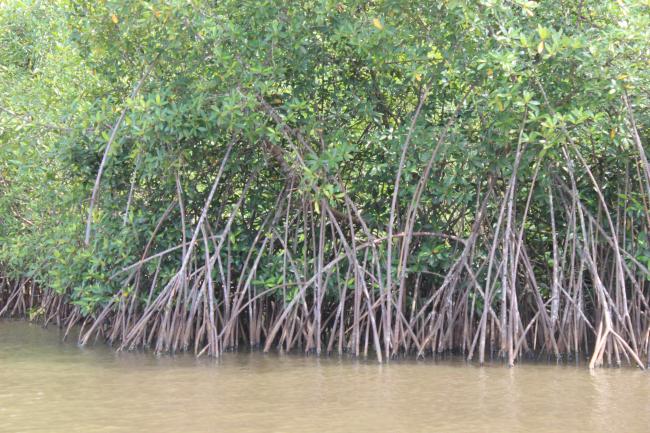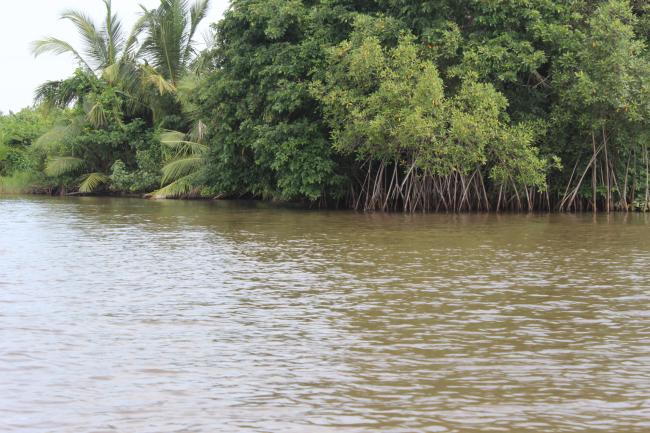Iles Ehotilé-Essouman
Iles Ehotilé-Essouman
- Country:
- Côte d'Ivoire
- Site number:
- 1584
- Area:
- 27,274.0 ha
- Designation date:
- 18-10-2005
- Coordinates:
- 05°09'26"N 03°13'12"W
Carousel
CarouselMaterials presented on this website, particularly maps and territorial information, are as-is and as-available based on available data and do not imply the expression of any opinion whatsoever on the part of the Secretariat of the Ramsar Convention concerning the legal status of any country, territory, city or area, or of its authorities, or concerning the delimitation of its frontiers or boundaries.
The Ehotilé-Essouman Complex includes a group of nine islands situated in a lagoon separated from the sea by a string of sand dunes. The Site provides a spawning and nursery ground for a number of fish such as daisy stingray Dasyatis margarita and bonefish Albula vulpes, for oysters such as Crassostrea gasar, gastropods, prawns and crabs. African manatee Trichechus senegalensis, spotted-necked otter Hydrictis maculicollis and African clawless otter Aonyx capensis also benefit from the aquatic environment, while the Site hosts numerous waterbird species. It also plays an important role in recharging groundwater, stabilizing the shoreline, attenuating wave action, and regulating the exchange of nutrients between the sea and the lagoon. The Site has been a national park since 1974, after local communities banned activities other than tourism on the islands, and allowed fishing as a main activity in the rest of the area. The presence of underwater ancestral cemeteries gives cultural importance to the Site, and scientific and educational projects have taken place there. However, timber exploitation, overfishing, uncontrolled tourism and hunting of birds and bats present threats. A management plan is being implemented with local communities who contribute effectively to the conservation of the Site.
- National Park
- CI1584RIS_1809_fr.pdf
- CI1584RISformer_160301.pdf
- CI1584map1.pdf
- CI1584map2.pdf
- CI1584taxo.zip


